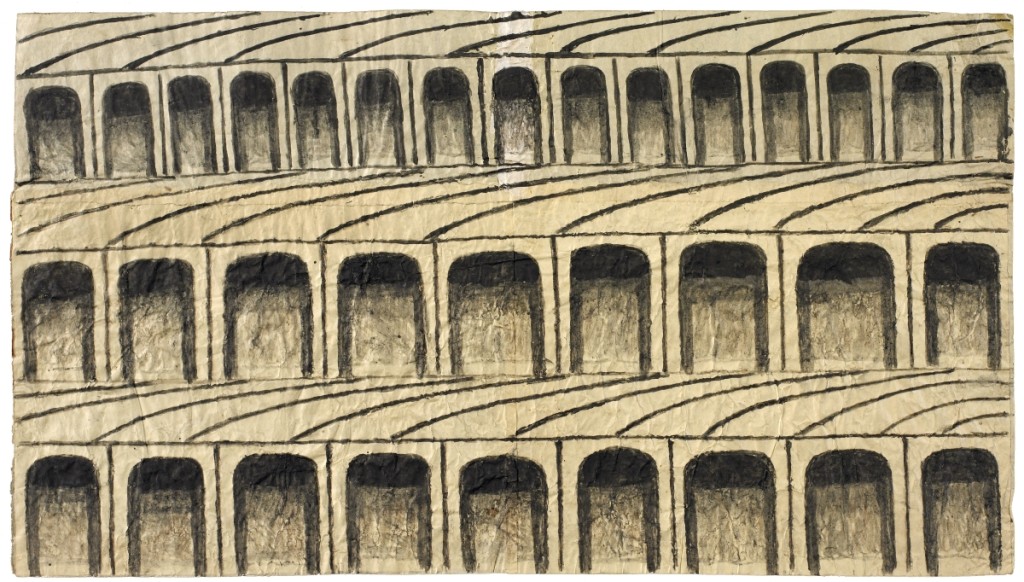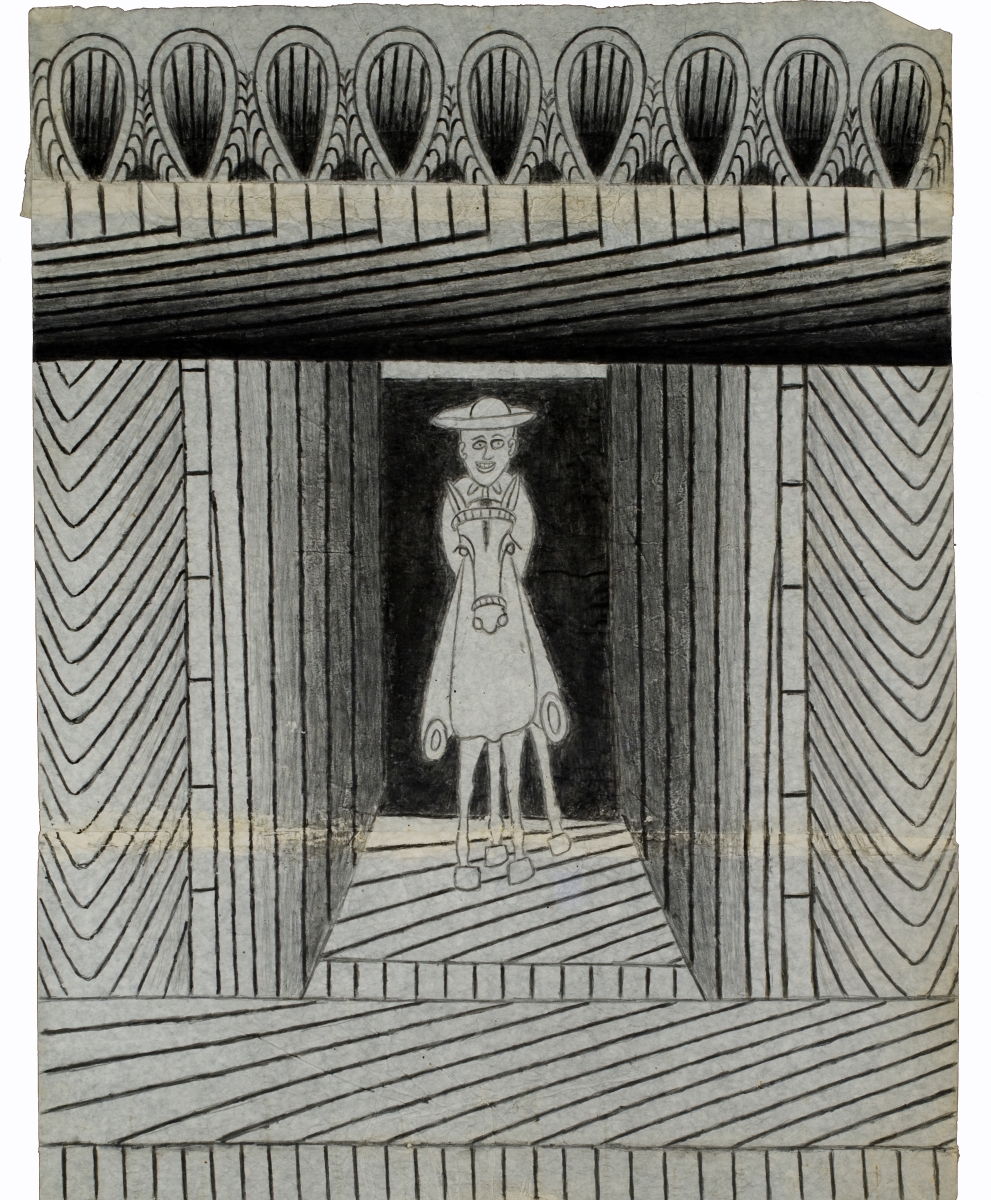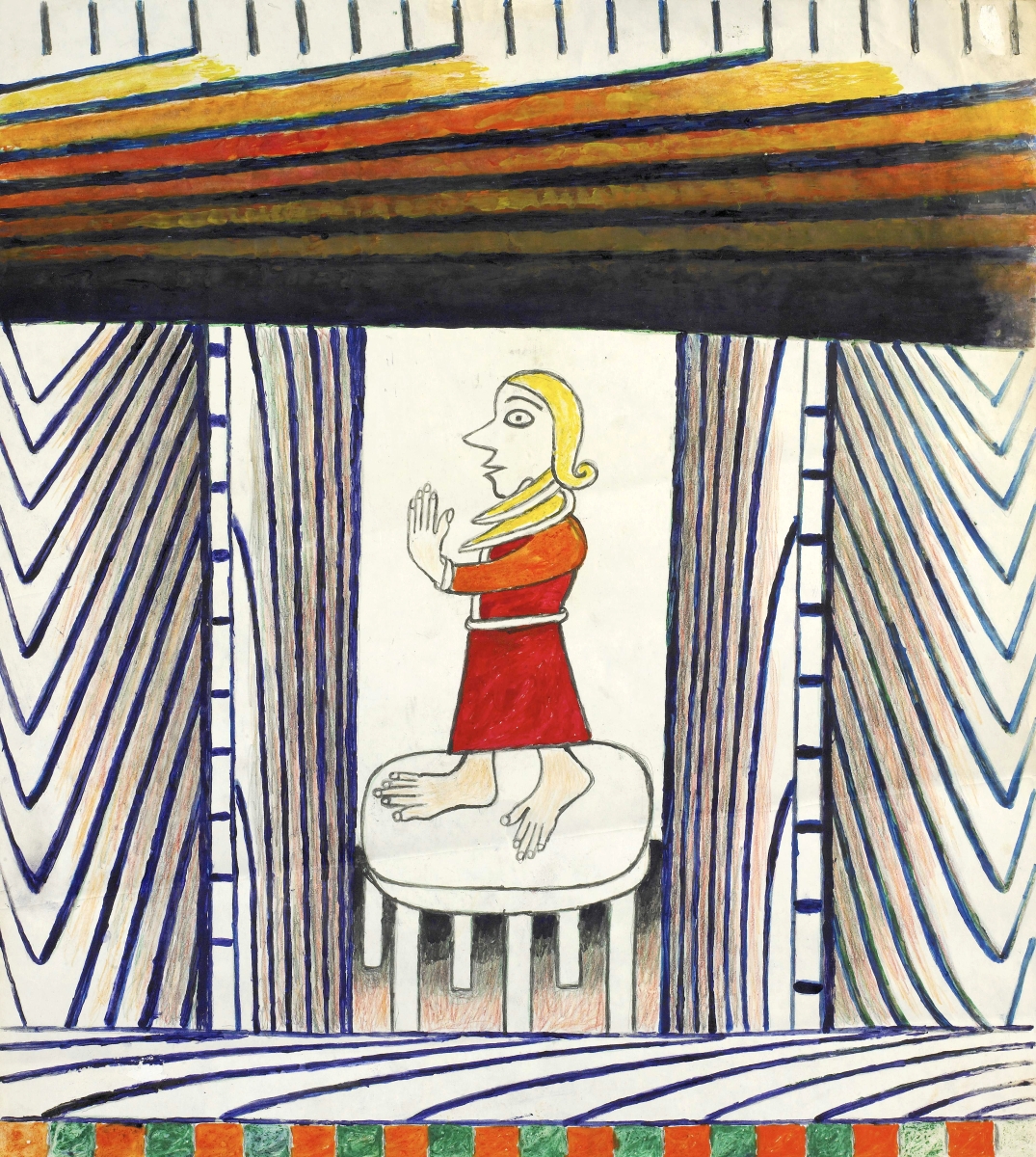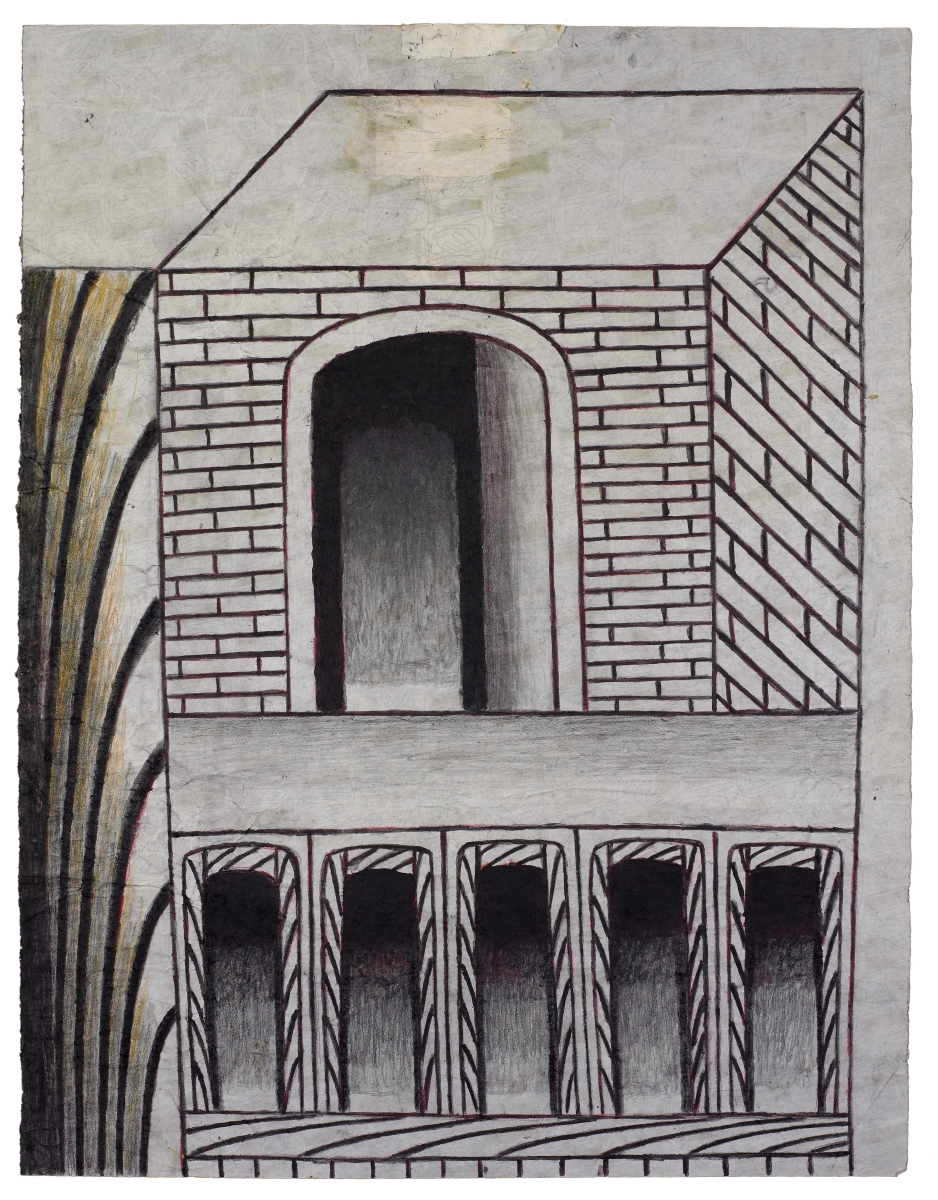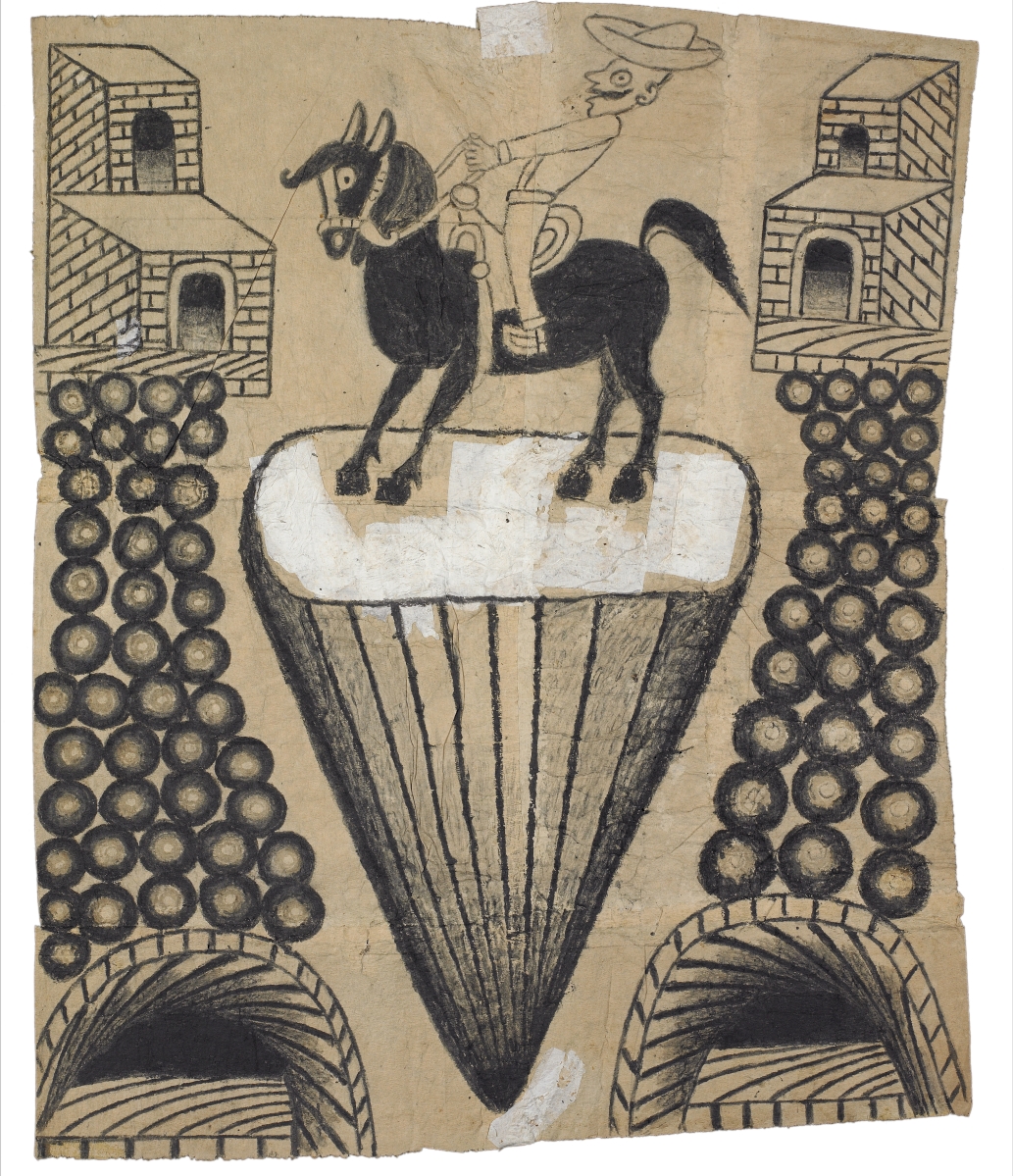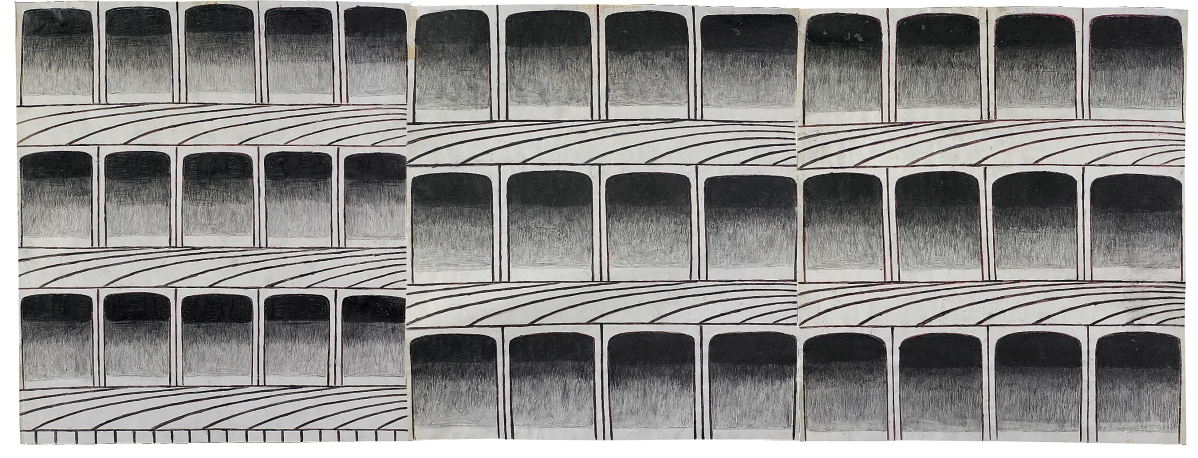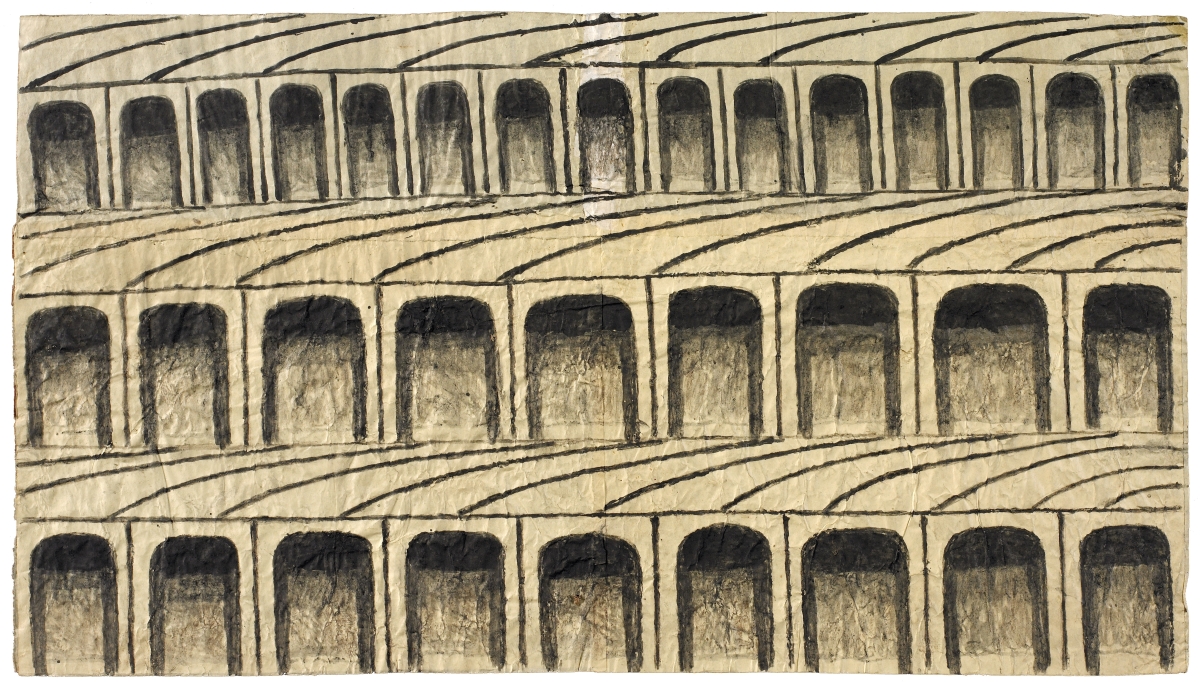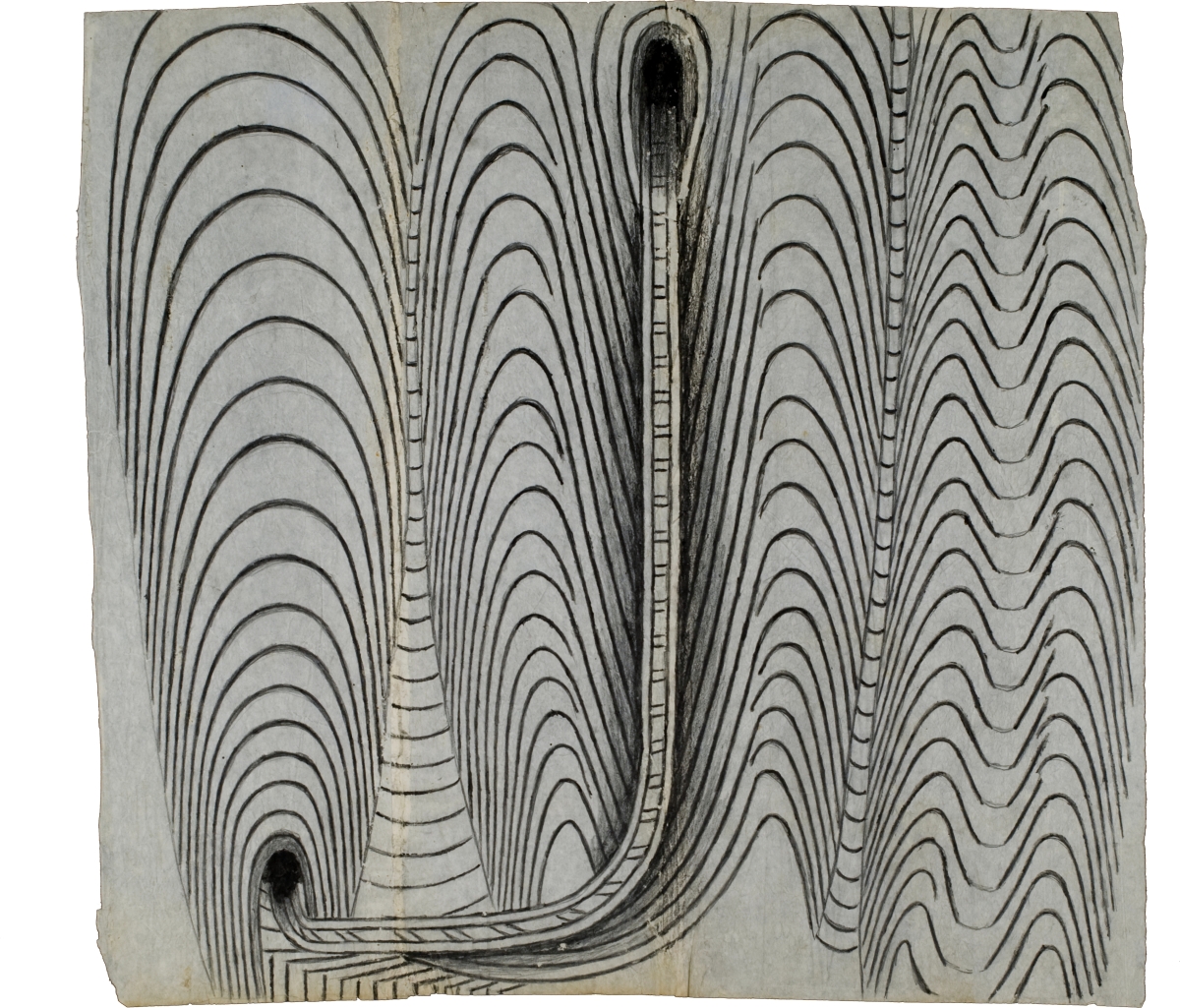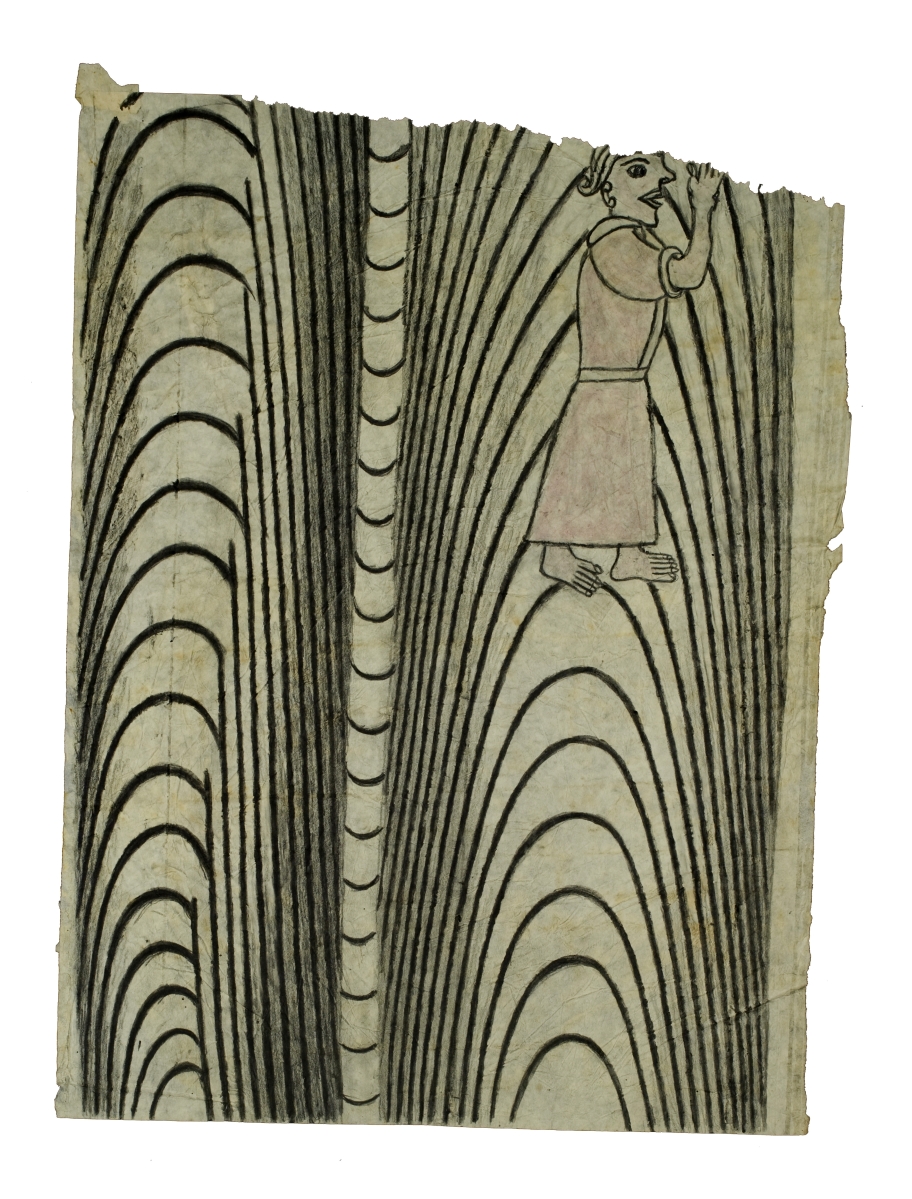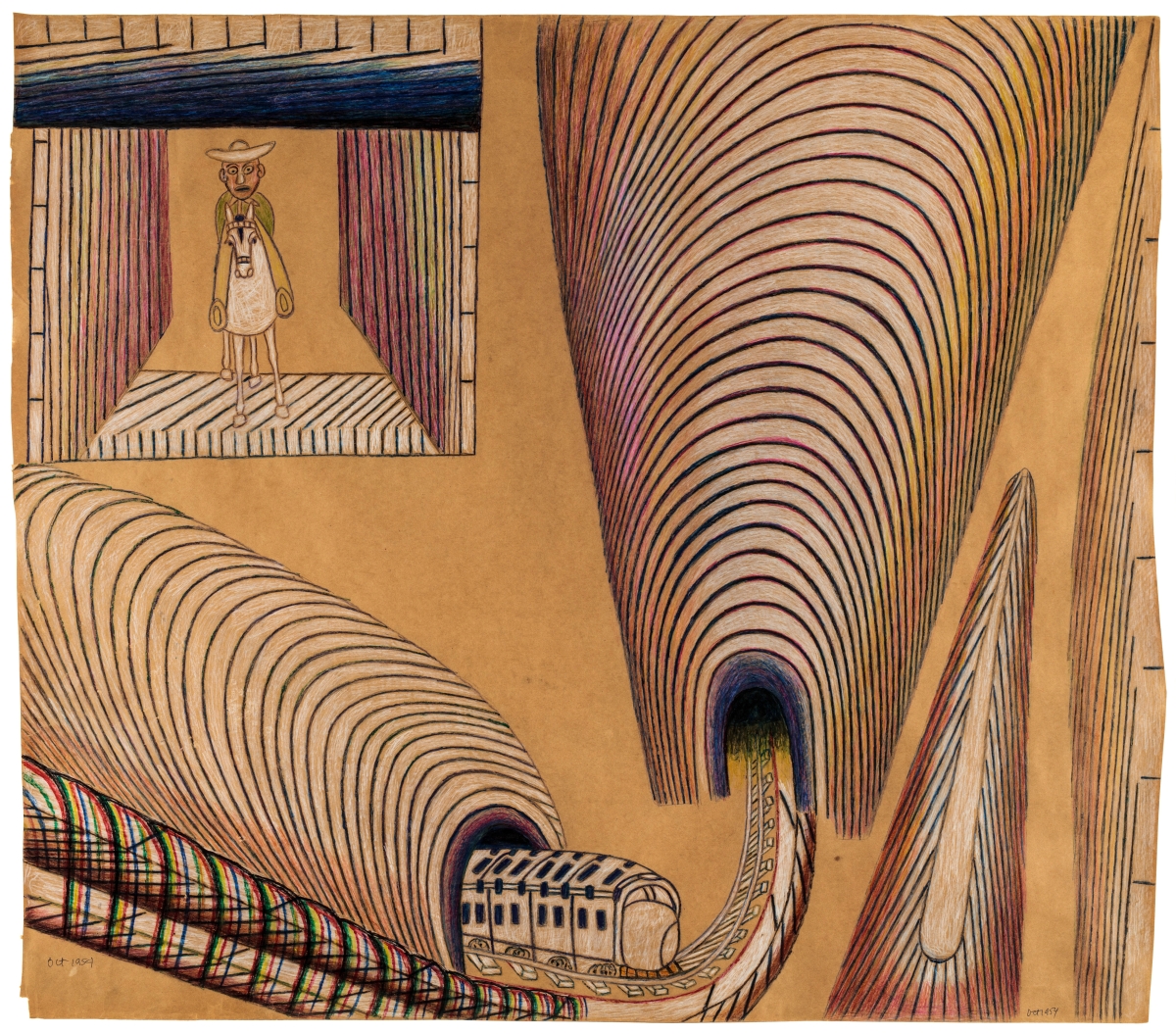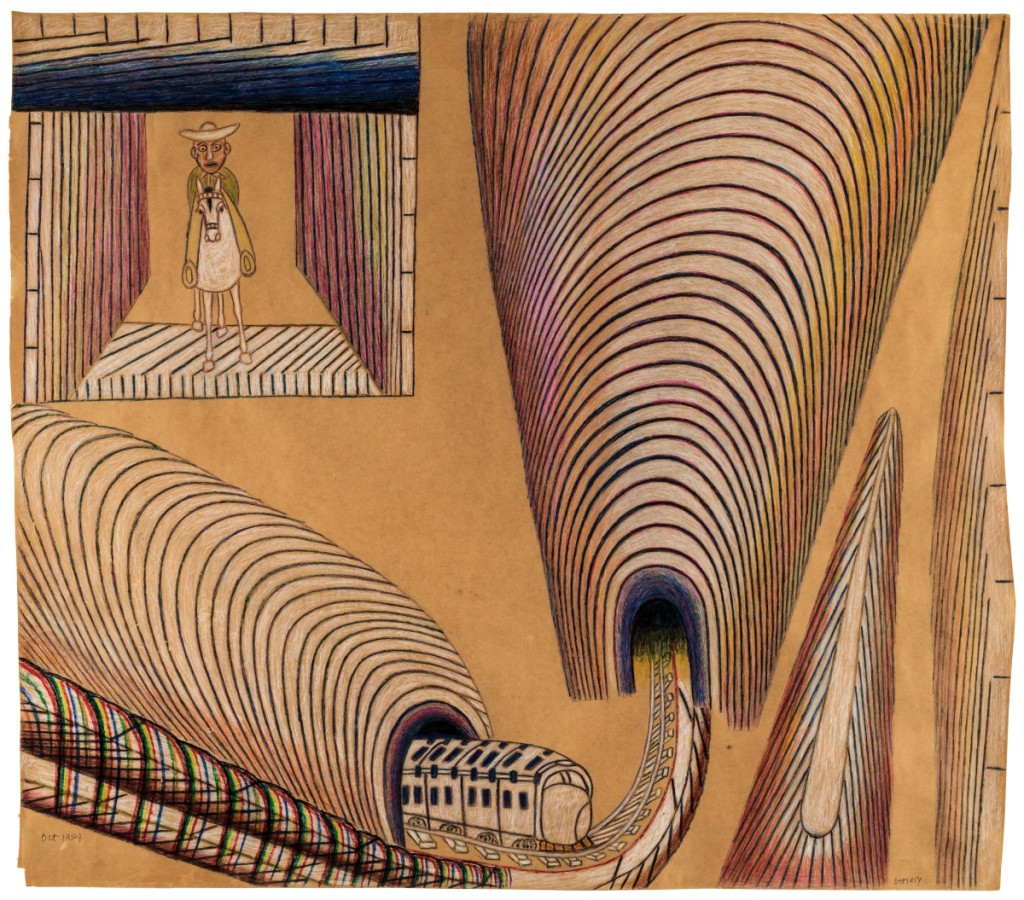
Untitled (Train and Tunnels), 1954, pencil, colored pencil, crayon and watercolor on paper, 36 by 41¼ inches.
NEW YORK CITY – Víctor M. Espinosa, eminent scholar on Martín Ramírez (1895-1963), wrote in his text to the exhibition now at Ricco/Maresca gallery, that since “Martín Ramírez’s work was first exhibited in 1952, he has been admired for his ability to construct a very singular visual language. His sophisticated compositions combine organic elements drawn from nature, representational conventions of topographic maps and geometric and architectural forms with an intense sense of modernity.”
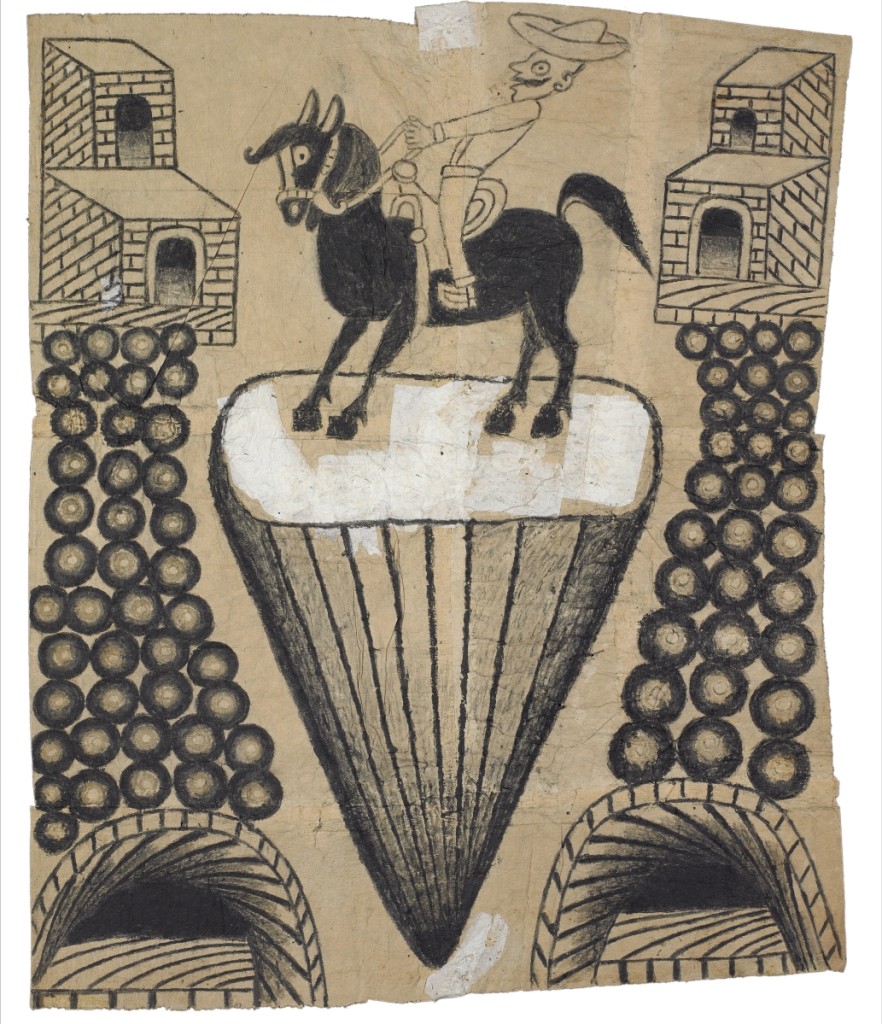
Untitled (Abstracted Landscape with Horse and Rider), circa 1960-63, gouache and graphite on pieced paper,24 by 19 inches.
On view through December 2, “Martín Ramírez: A Journey” offers an opportunity to see Ramírez’s technical skill, stylistic evolution and thematic coherence, all of which led Roberta Smith of The New York Times to call him “simply one of the greatest artists of the Twentieth Century.”
Born in Jalisco, Mexico, Ramírez is widely known as one of the preeminent self-taught masters of the Twentieth Century. Thrust by political and religious upheavals caused by the Mexican Revolution and seeking to support his family, Ramírez relocated to the United States in 1925. He worked as an impoverished immigrant in the California mines and railroads until he was picked up by police in 1931 – reportedly in a disoriented state. Ramírez was eventually declared schizophrenic (with previous diagnoses of manic-depression and catatonic dementia praecox). He was committed first at Stockton State Hospital and then at the DeWitt State Hospital in Auburn, Calif., where he spent the rest of his life.
Over the course of his life, Ramírez produced some 500 works characteristic for their clean yet brazen draftsmanship. The imagery is both suggestive and nostalgic, often reminiscent of his own life experiences. Mexican Madonnas, animals, cowboys, trains and landscapes merge with scenes of American culture and create a profound documentation of a Mexican living and working in the United States.
Compositionally, he renders space into multi-dimensional, almost theatrical, layouts using sharp geometric forms with strong linear qualities.
Espinosa writes, “Ramírez had a highly developed sense of design, color harmony and technical mastery to manipulate lines and space. His perfectly balanced compositions successfully integrate the figurative and the abstract. His subjects, largely silhouetted, are inspired by his life and rooted in the history, culture and geography of his Mexican and Californian worlds; while his abstractions are the result of a rich and complex use of lines that represent tunnels, windows, railroad tracks, empty corridors and also mountains, hills, canyons, fields and canals.
“The modern and abstract appearance of his work is achieved by his singular use of linear structures and concentric forms to represent distance and profundity in ways that do not follow the conventions of traditional perspective: his drawings deploy more jarring, less managed breaks and disjunctions. The manipulation of lines, along with delicate shading that produces a sense of three-dimensional space on a two-dimensional surface, is the most notable visual singularity of his work.”
His work has been the subject of numerous museum shows, including the retrospective “Martín Ramírez: Pintor Mexicano,” at the Centro Cultural/Arte Contemporáneo in Mexico City (1989), and two major exhibitions at the American Folk Art Museum, New York City, a traveling retrospective titled “Martín Ramírez” (2007) and “Martín Ramírez: The Last Works” (2009). In 2010, the master was the subject of a comprehensive exhibition curated by Brooke Davis Anderson at Museo Nacional Centro de Arte Reína Sofía in Madrid, titled “Martín Ramírez: Reframing Confinement.” In 2015, the United States Postal Service released a set of five commemorative “Martin Ramirez” Forever stamps, which marked the first time an Outsider artist and Mexican American artist was featured on a USPS Stamp.
His work is in permanent collections, including the Milwaukee Art Museum, the High Museum of Art in Atlanta, the Philadelphia Museum of Art, the Museum of Modern Art and the Solomon R. Guggenheim Museum in New York City.
The estate of Martín Ramírez has been represented exclusively by the Ricco/Maresca Gallery since 2008. The gallery is at 529 West 20th Street, third floor, in the 529 Arts Building between Tenth and Eleventh Avenues. For further information, 212-627-4819 or www.ricomaresca.com.
All artwork by Martín Ramírez (1895-1953), ©Martín Ramírez Estate | Ricco/Maresca Gallery.

